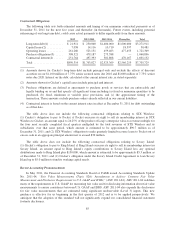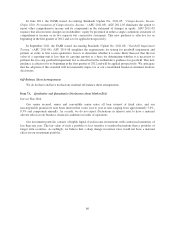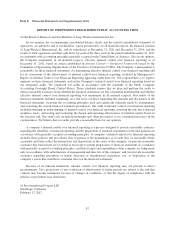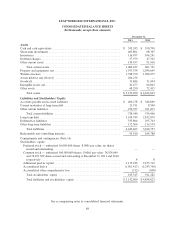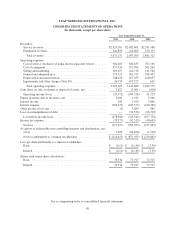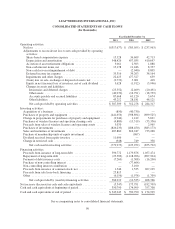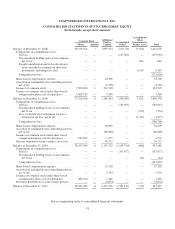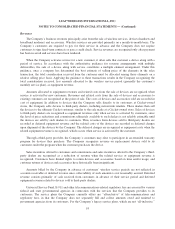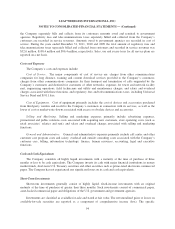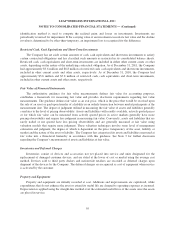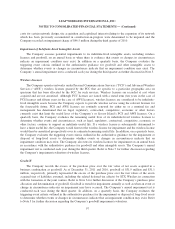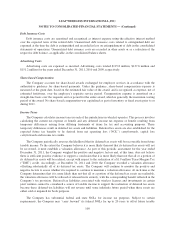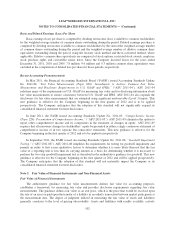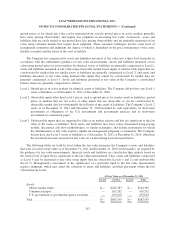Cricket Wireless 2011 Annual Report Download - page 103
Download and view the complete annual report
Please find page 103 of the 2011 Cricket Wireless annual report below. You can navigate through the pages in the report by either clicking on the pages listed below, or by using the keyword search tool below to find specific information within the annual report.LEAP WIRELESS INTERNATIONAL, INC.
NOTES TO CONSOLIDATED FINANCIAL STATEMENTS — (Continued)
Revenues
The Company’s business revenues principally arise from the sale of wireless services, devices (handsets and
broadband modems) and accessories. Wireless services are provided primarily on a month-to-month basis. The
Company’s customers are required to pay for their service in advance and the Company does not require
customers to sign fixed-term contracts or pass a credit check. Service revenues are recognized only after payment
has been received and services have been rendered.
When the Company activates service for a new customer, it often sells that customer a device along with a
period of service. In accordance with the authoritative guidance for revenue arrangements with multiple
deliverables, the sale of a device along with service constitutes a multiple element arrangement. Under this
guidance, once a company has determined the best estimate of selling price of the elements in the sales
transaction, the total consideration received from the customer must be allocated among those elements on a
relative selling price basis. Applying the guidance to these transactions results in the Company recognizing the
total consideration received, less amounts allocated to the wireless service period (generally the customer’s
monthly service plan), as equipment revenue.
Amounts allocated to equipment revenues and related costs from the sale of devices are recognized when
service is activated by new customers. Revenues and related costs from the sale of devices and accessories to
existing customers are recognized at the point of sale. The costs of devices and accessories sold are recorded in
cost of equipment. In addition to devices that the Company sells directly to its customers at Cricket-owned
stores, the Company sells devices to third-party dealers, including nationwide retailers. These dealers then sell
the devices to the ultimate Cricket customer, similar to the sale made at a Cricket-owned store. Sales of devices
to third-party dealers are recognized as equipment revenues only when service is activated by customers, since
the level of price reductions and commissions ultimately available to such dealers is not reliably estimable until
the devices are sold by such dealers to customers. Thus, revenues from devices sold to third-party dealers are
recorded as deferred equipment revenue and the related costs of the devices are recorded as deferred charges
upon shipment of the devices by the Company. The deferred charges are recognized as equipment costs when the
related equipment revenue is recognized, which occurs when service is activated by the customer.
Through a third-party provider, the Company’s customers may elect to participate in an extended warranty
program for devices they purchase. The Company recognizes revenue on replacement devices sold to its
customers under the program when the customer purchases the device.
Sales incentives offered to customers and commissions and sales incentives offered to the Company’s third-
party dealers are recognized as a reduction of revenue when the related service or equipment revenue is
recognized. Customers have limited rights to return devices and accessories based on time and/or usage, and
customer returns of devices and accessories have historically been insignificant.
Amounts billed by the Company in advance of customers’ wireless service periods are not reflected in
accounts receivable or deferred revenue since collectability of such amounts is not reasonably assured. Deferred
revenue consists primarily of cash received from customers in advance of their service period and deferred
equipment revenue related to devices sold to third-party dealers.
Universal Service Fund, E-911 and other telecommunications-related regulatory fees are assessed by various
federal and state governmental agencies in connection with the services that the Company provides to its
customers. The service plans the Company currently offers are “all-inclusive” of telecommunications and
regulatory fees, in that the Company does not separately bill and collect amounts owed and remitted to
government agencies from its customers. For the Company’s legacy service plans, which are not “all-inclusive,”
93




